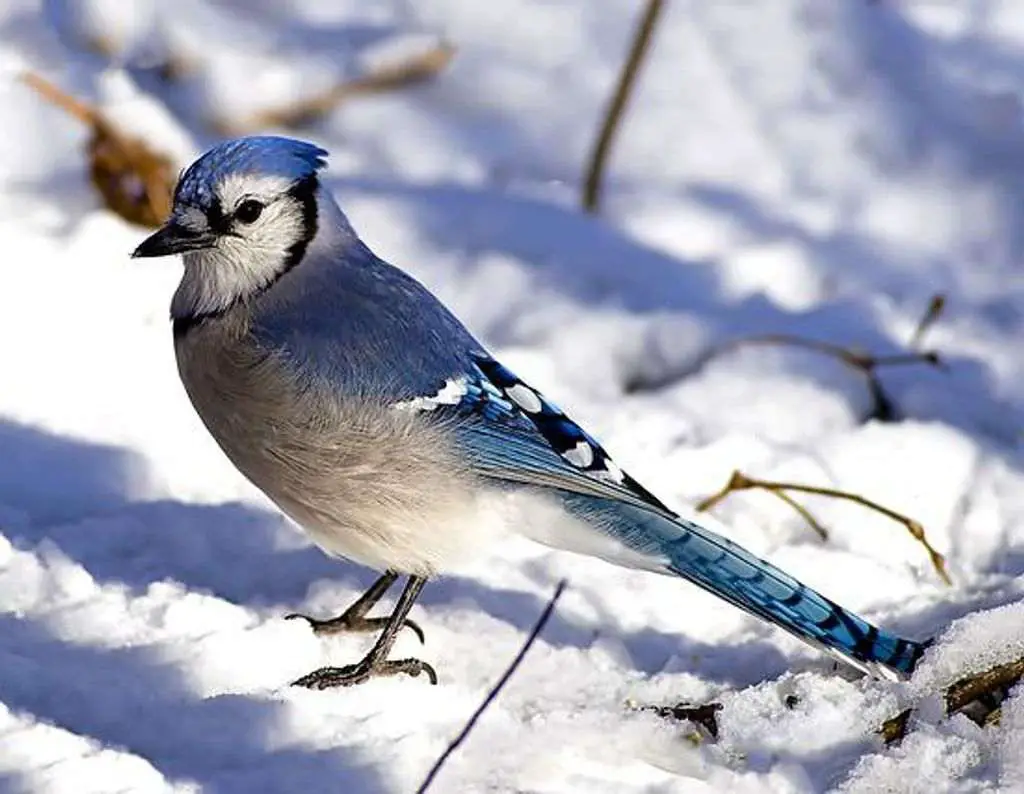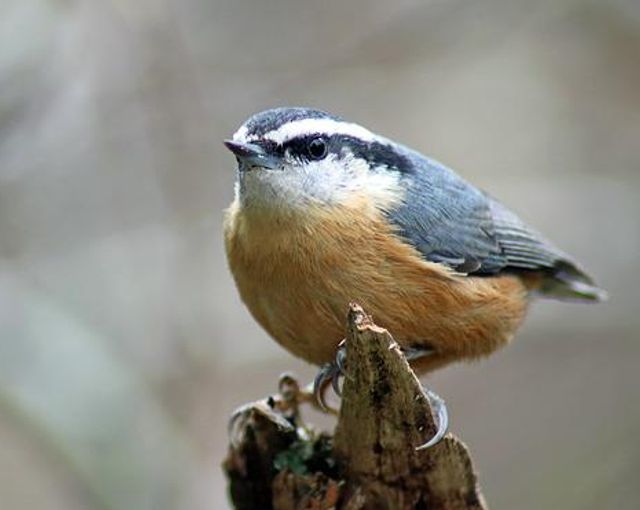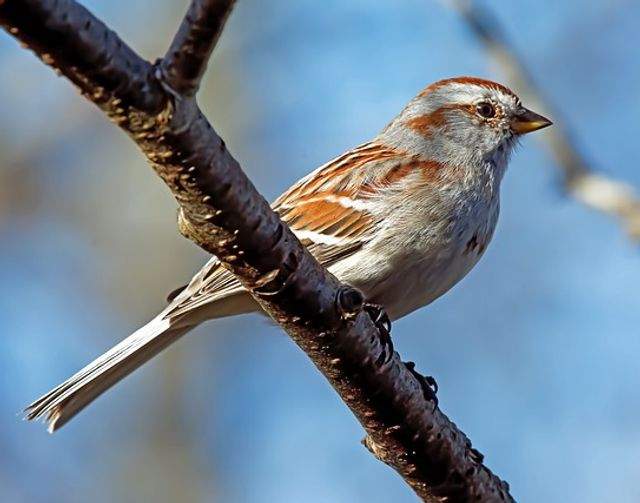Welcome to our expert guide on the 22 backyard winter birds in Minnesota! As winter blankets Minnesota in snow, it also brings forth a diverse array of avian visitors to backyard feeders and habitats.
In this comprehensive guide, we’ll dive into the fascinating world of Minnesota’s winter birdlife, featuring 22 species commonly observed during the colder months.
From vibrant cardinals to charming chickadees, learn about their behaviors, habitats, and survival strategies in the face of winter’s challenges.
Whether you’re a seasoned birder or a newcomer to birdwatching, join us as we explore the beauty and resilience of Minnesota’s backyard winter birds.
Table of Contents
- 1 Backyard Winter Birds in Minnesota
- 1.1 Black-capped Chickadee
- 1.2 American Crow
- 1.3 Downy Woodpecker
- 1.4 White-breasted Nuthatch
- 1.5 Blue Jay
- 1.6 Hairy Woodpecker
- 1.7 Dark-eyed Junco
- 1.8 Northern Cardinal
- 1.9 Red-bellied Woodpecker
- 1.10 American Goldfinch
- 1.11 House Sparrow
- 1.12 House Finch
- 1.13 Red-breasted Nuthatch
- 1.14 Common Redpoll
- 1.15 European Starling
- 1.16 Pileated Woodpecker
- 1.17 Common Raven
- 1.18 American Robin
- 1.19 American Tree Sparrow
- 1.20 Mourning Dove
- 1.21 Pine Grosbeak
- 1.22 Pine Siskin
- 2 Author
Backyard Winter Birds in Minnesota
Black-capped Chickadee
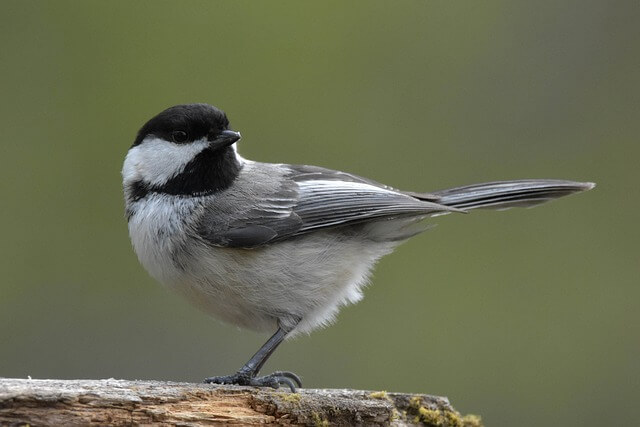
- Length: 4.7-6.0″ in (12.0-15.2 cm)
- Weight: 0.3-0.5 oz (9-14 g)
- Wingspan: 6.3-8.3 in (16-21 cm)
- Scientific Name: Poecile atricapillus
- Frequency of Occurrence: 57.91%(Statistic by: eBird)
- Where To Find Them: They are found in the following counties in Minnesota: Adams, Brown, Carver, Cass, Chisago, Clay, Clearwater, Cottonwood, Crookston, Dakota, Dodge, Faribault, and Fillmore.
- How to Attract Them: Ways to attract these birds to your yard are by planting trees that provide nest cavities, providing food sources such as sunflower seeds, and installing bird houses.
General Information: The Black-capped Chickadee is a small bird that can be found in many parts of North America. It is found in the eastern United States, the southern parts of Canada, and parts of Central America. The Black-capped Chickadee is a common bird in most of its range.
The Black-capped Chickadee prefers open woodland with some trees and shrubs, but it will also use urban areas and suburban gardens. It eats small insects, seeds, and fruit. It nests in cavities in trees or on ledges. The chickadee is monogamous and usually lives for about two years.
Related Posts:
- Unique Black-Capped Chickadee Facts You Need To Know!
- Best Bird Feeder For Chickadees (The Ultimate Guide 2022)
- How Do I Attract Chickadees To My Yard (Expert Tips)
American Crow
- Length: 15.8-20.9 in (40-53 cm)
- Weight: 11.2-21.9 oz (316-620 g)
- Wingspan: 33.5-39.4 in (85-100 cm)
- Scientific Name: Corvus brachyrhynchos
- Frequency of Occurrence: 41.72%
- Where To Find Them: In Minnesota, American Crows can be found in the counties of Cass, Clay, Crow Wing, Dakota, Fillmore, Grant, Hennepin, Houston, Hubbard, Isanti, Kandiyohi, Kittson, Lake of the Woods, Lincoln, Lyon, Marshall, Mille Lacs, Morrison, Nicollet, Nobles, Norman, Olmsted, Otter Tail, Pennington, Renville and Sherburne.
- How to Attract Them: American crows are attracted to yards that have a diversity of species, including plants that produce food. One way to attract these curious birds is by planting a variety of seeds and vegetables in your yard. The more food sources available, the more likely they are to visit. You can also create nesting areas for these creatures by using twigs, and leaves, and branches to construct a perch.
General Information: The American Crow is the most common bird in North America, and can be found throughout the continent. The American Crow is a medium-sized crow that is mostly black except for a white head and tail. The American Crow ranges from Canada to Central America and South America. The American Crow prefers open areas such as grasslands, deserts, and woodlands, but will also utilize urban areas.
The American Crow eats mainly insects, but will also consume small rodents, lizards, and other birds. Nests are built in tall trees or on high platforms. Eggs are laid blue and buff with a few dark spots. The American Crow typically nests for 2-3 weeks before leaving for the winter.
Related Posts:
Downy Woodpecker
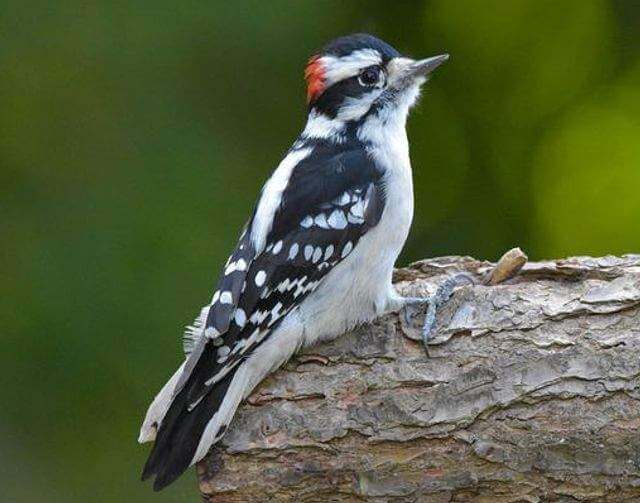
- Length: 5.5-6.7 in (14-17 cm)
- Weight: 0.7-1.0 oz (21-28 g)
- Wingspan: 9.8-11.8 in (25-30 cm)
- Scientific Name: Picoides pubescens
- Frequency of Occurrence: 37.84%
- Where To Find Them: The Downy Woodpecker is a common bird in Minnesota and can be found in all the counties except for Hennepin County.
- How to Attract Them: Plant a variety of fruit trees and bushes in your yard. Downy Woodpeckers love to eat fruits, and will come looking for food. Install a bird feeder in your yard with mealworms, suet, or black-oil sunflower seeds. This will give the woodpeckers a place to hang out and eat their food, and they will likely come visiting more often as a result. Try creating natural habitats for the birds in your yard by planting shrubs and trees that provide shelter from the sun and rain. This will make it easier for the birds to find places to nest, play, and rest.
General Information: The Downy Woodpecker is a small woodpecker that can be found throughout most of North America. The distribution range of the Downy Woodpecker includes most of Canada, the United States, and Mexico. The Downy Woodpecker prefers areas with dense tree growth and can often be found in forests, parks, and gardens.
The diet of the Downy Woodpecker consists mostly of insects, but they will also eat small seeds and fruit. The Downy Woodpecker nests in cavities in trees, but they are also known to nest in old woodpecker holes or built-up structures.
Related Post:
- How to Attract Downy Woodpeckers to Your Yard? (Easy!)
- 7 Birds That Look Like Downy Woodpecker (Explained)
White-breasted Nuthatch
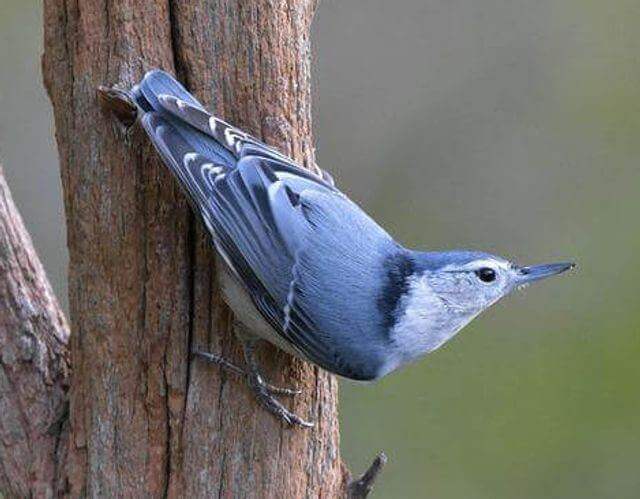
- Length: 5.1-5.5 in (13-14 cm)
- Weight: 0.6-1.1 oz (18-30 g)
- Wingspan: 7.9-10.6 in (20-27 cm)
- Scientific Name: Sitta carolinensis
- Frequency of Occurrence: 33.66%
- Where To Find Them: The White-breasted Nuthatch is a common bird in Minnesota, found throughout the state. It can be found in most counties, but is most common in the Twin Cities metropolitan area.
- How to Attract Them: There are many different things you can do to attract White-breasted Nuthatches to your yard. One way is to provide them with a variety of food options such as mealworms, nuts, suet, and peanut butter. You can also set up a bird feeder and make sure the seed is fresh. You can also place flowering plants in your yard, as these nuthatches like to eat the flowers. You can also create a nestbox for them, and fill it with fresh straw or plant material. Finally, you can create a habitat for them by planting shrubs and trees close by where they can perch and watch over their territory.
General Information: The White-breasted Nuthatch is a common bird found throughout most of North America. It ranges from southern Canada to northern Mexico, and from the Rocky Mountains to the Appalachians. The White-breasted Nuthatch is an adaptable bird that is able to live in a variety of habitats, including forest, farmland, and urban areas.
It eats a variety of food items, including insects, seeds, and fruit. The White-breasted Nuthatch builds its nest in a cavity in a tree or other structure.
Related Post: How to Attract Nuthatches to your Backyard? Expert Tips!
Blue Jay
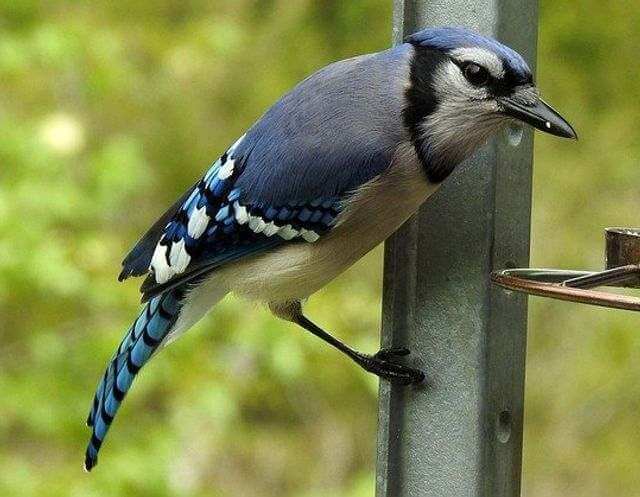
- Length: 9.8-11.8 in (25-30 cm)
- Weight: 2.5-3.5 oz (70-100 g)
- Wingspan: 13.4-16.9 in (34-43 cm)
- Scientific Name: Cyanocitta cristata
- Frequency of Occurrence: 29.21%
- Where To Find Them: There are six different counties in Minnesota where the blue Jay can be found – Beltrami, Cass, Crow Wing, Hubbard, Kandiyohi and Lake of the Woods.
- How to Attract Them: Plant a variety of interesting plants – Jays like to eat a variety of different types of fruits and vegetables, so provide them with easy access to plenty of colorful plants for nourishment. Perennial flowers are also a big hit with these birds – try flowering vines or daisy varieties. Keep your bird feeders full – Jays will search high and low for food, so fill up your feeders regularly with fresh seed such as black-oil sunflowers seed or nuts.
General Information: The blue Jay is a common bird found in most parts of North America. It is not limited to any particular region, but it does prefer moist environments. The blue Jay’s distribution range includes from Alaska to the southernmost tip of South America and from the Canadian Prairies to the Gulf Coast.
This widespread bird can be found in a variety of habitats, including forests, parks, and urban areas. It eats a wide variety of food, including insects, small rodents, frogs, and baby birds. The blue Jay nests in trees or on tall poles.
Related Posts:
- What does a Blue Jay look like? Tips to identify them!
- 15 Best Bird Feeders For Blue Jays (Tried & Tested 2022)
- What Attracts Blue Jays to your Yard?(Expert Tips)
Hairy Woodpecker
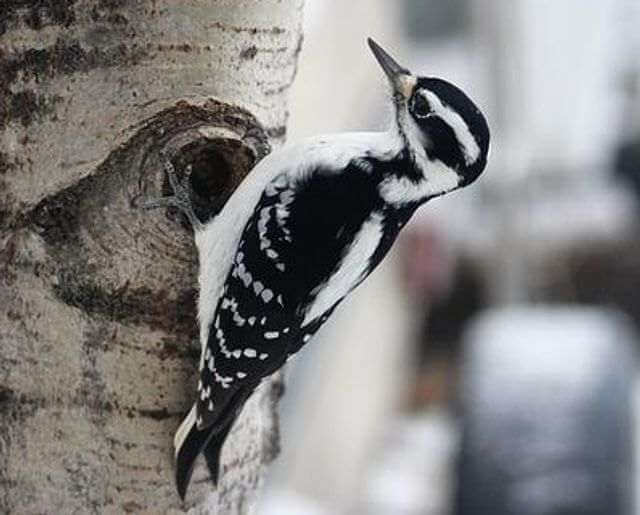
- Length: 7.1-10.2 in (18-26 cm)
- Weight: 1.4-3.4 oz (40-95 g)
- Wingspan: 13.0-16.1 in (33-41 cm)
- Scientific Name: Leuconotopicus villosus
- Frequency of Occurrence: 26.14%
- Where To Find Them: They can be found in counties in Minnesota such as Kandiyohi, Meeker, Clay, and Watonwan.
- How to Attract Them: Create a naturalistic habitat for them: Provide tree cavities and nest boxes in which they can nest and feed their young. Make sure there are plenty of downed trees and other sources of food around. Plant thorny shrubs or vines that the birds can harvest for food. This will help provide shelter and hide fruit from predators. Be creative when decorating your yard: Hang birdfeeders in strategic areas with black oil sunflower seed, peanut butter suet, or even place an acorn dish.
General Information: The Hairy Woodpecker is a common bird found in most of North America. It occupies a range that includes most of Canada and the United States, as well as parts of Central America and South America. The Hairy Woodpecker is a feeder bird that specializes in eating insects such as caterpillars, grasshoppers, beetle larvae, birds eggs, spiders, snails and more.
It typically forages in trees, but it will also search for food on the ground. The Hairy Woodpecker breeds in northern regions during the spring and summer months. Nests are built in cavities high in trees and are made out of sticks, leaves, moss, and feathers.
Dark-eyed Junco
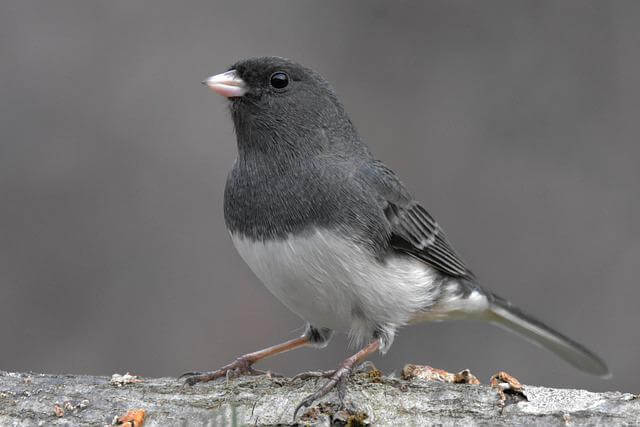
- Length: 5.5-6.3 in (14-16 cm)
- Weight: 0.6-1.1 oz (18-30 g)
- Wingspan: 7.1-9.8 in (18-25 cm)
- Scientific Name: Junco hyemalis
- Frequency of Occurrence: 24.35%
- Where To Find Them: In Minnesota, the Dark-eyed Junco is found in all the geographic counties except Hennepin County.
- How to Attract Them: There are a few things you can do to attract Dark-eyed Juncos to your backyard in winter, by providing them bird feeders filled with millet, cracked corn, and hulled sunflower seeds, and creating an attractive habitat. You can also try setting up a birdbath or other water feature. In the spring, provide flowers that are in bloom during the migration season, such as lupine or bluebonnets.
General Information: The Dark-eyed junco is a bird found in most of North America. It ranges from southern Canada to the southernmost tip of South America, and from the Gulf of Mexico to Alaska. The Dark-eyed Junco is a migratory bird, flying south in winter and north in summer.
In North America, it prefers open woodland, but it can also be found in urban areas. The diet of the Dark-eyed Junco includes insects, seeds, and fruit. It nests in tree cavities or on the ground, laying three to six eggs per clutch.
Related Post: Fun Facts About Dark-eyed Juncos
Northern Cardinal

- Length: 8.3-9.1 in (21-23 cm)
- Weight: 1.5-1.7 oz (42-48 g)
- Wingspan: 9.8-12.2 in (25-31 cm)
- Scientific Name: Cardinalis cardinalis
- Frequency of Occurrence: 23.79%
- Where To Find Them: Northern cardinals make their home in a variety of counties in Minnesota, but the majority can be found in Hennepin, Ramsey and Dakota.
- How to Attract Them: Provide a good environment for the Northern cardinal. Make sure the yard is well-maintained and have plenty of food and water available. The cardinal prefers an area with dense foliage and lots of flowers. Keep the bird feeders filled with fresh food regularly. Cardinals are especially fond of suet cakes, sunflower seeds, and other fatty foods.Try creating a nest box for the Northern cardinal. This will help keep the bird safe from predators and provide it with a place to lay its eggs.
General Information: The Northern cardinal is a common bird found throughout the United States. It ranges from the eastern seaboard to the Rocky Mountains, and from New England to Texas. The northern cardinal primarily eats seeds from bushes, trees, and other tall plants as well as insects such as grasshoppers, caterpillars, beetles, flies and ants.
Nesting habits of the northern cardinal vary depending on location. In some areas, they build their nests in large trees while in others they use artificial structures such as telephone poles or man-made bird houses. The breeding season for northern cardinals is April through June.
Related Post:
- Cardinal Bird Facts Every Birdwatcher Should Know!
- Best Birdhouse for Cardinals 2022 (Tested And Rated)
- Where Are Cardinals Found? Best Spots to Look!
Red-bellied Woodpecker
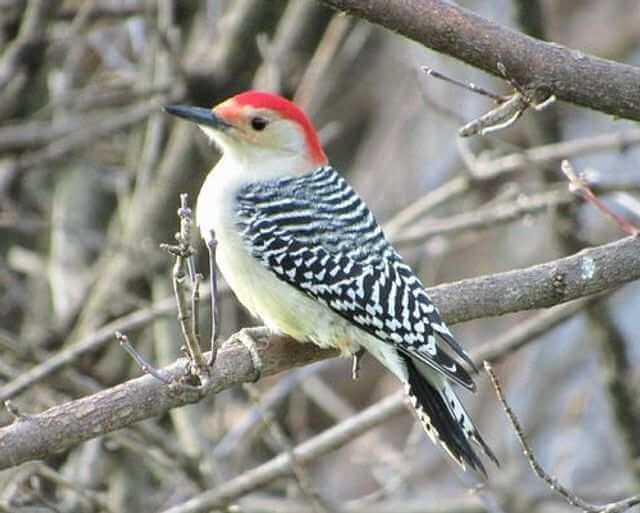
- Length: 9.4 in (24 cm)
- Weight: 2.0-3.2 oz (56-91 g)
- Wingspan: 13.0-16.5 in (33-42 cm)
- Scientific Name: Melanerpes carolinus
- Frequency of Occurrence: 19.40%
- Where To Find Them: In Minnesota, they are located in Crawford County and Todd County.
- How to Attract Them: They are attracted to open areas with plenty of trees and shrubs for foraging. You can provide some of these features by planting fruit trees and bushes, maintaining ornamental landscaping, and installing bird feeders and filling them with sunflower seed, suet, or peanuts.
General Information: The red-bellied woodpecker is a common bird in the eastern and central United States. The distribution range of this bird extends from southern Canada, through most of the eastern United States, to northern Mexico. This woodpecker is found in a variety of habitats including deciduous and coniferous forests, but is most commonly seen in areas with tall trees and plenty of cavities.
The red-bellied woodpecker primarily eats insects, nuts, seeds, sap and fruit, but will also consume small birds eggs. They are cavity nesters, building their nests in holes in trees or on cliffs.
Related Post: How to Attract Red-bellied Woodpeckers to your Yard?
American Goldfinch
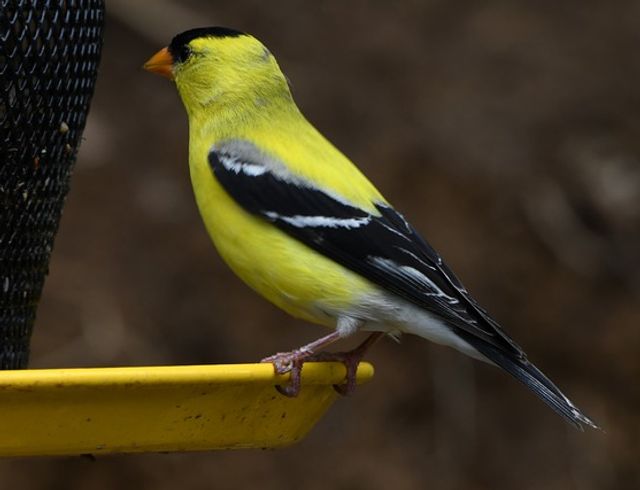
- Length: 4.3-5.1 in (11-13 cm)
- Weight: 0.4-0.7 oz (11-20 g)
- Wingspan: 7.5-8.7 in (19-22 cm)
- Scientific Name: Spinus tristis
- Frequency of Occurrence: 17.36%
- Where To Find Them: In Minnesota, they can be found in counties such as Benton, Chase, Polk, Sibley, Steele, and Waseca.
- How to Attract Them: Goldfinches are a popular choice for bird watchers because they are beautiful and interesting birds. They can be easily attracted to your yard by providing them with bird feeders filled with nyjer or seed, water sources such as a birdbath, and sheltered areas.
General Information: The American Goldfinch is a small bird that can be found in most parts of North America. It ranges from the Arctic tundra to the southern desert. The American Goldfinch is a migratory bird, and spends the winter in Central America or South America.
The American Goldfinch is a passerine bird and specializes in eating seeds. Its diet includes grasses, fruits, and insects. The American Goldfinch nests in shrubs, but often builds its nest on the ground near water. The eggs are pale white and have a bluish hue.
Related Post: Interesting American Goldfinch Facts You Need to Know!
House Sparrow
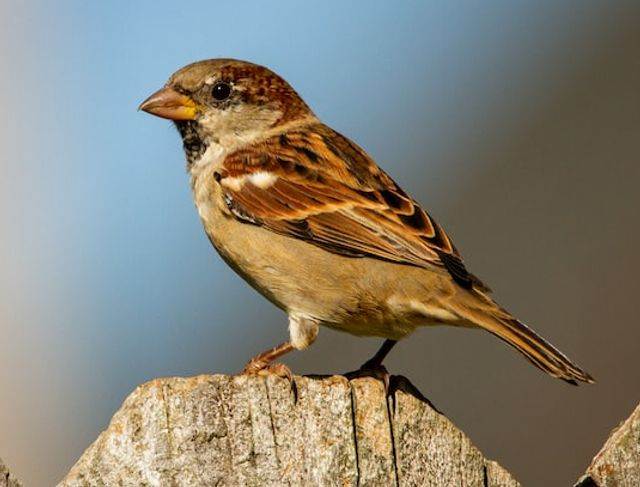
- Length: 5.9-6.7 in (15-17 cm)
- Weight: 0.9-1.1 oz (27-30 g)
- Wingspan: 7.5-9.8 in (19-25 cm)
- Scientific Name: Passer domesticus
- Frequency of Occurrence: 17.31%
- Where To Find Them: They are mainly found in the northern part of the state, but have been seen as far south as Redwood County and far east as Lyon County.
- How to Attract Them: First, try filling up any open spaces in your yard with sturdy perches and nest boxes. These birds love to perch and watch the world go by, so adding plenty of high-quality spotty perches will make them feel at home. Second, provide them with food sources. House Sparrows enjoy eating seeds, so feed them a variety of bird seed. This will help them get used to your presence and may even encourage them to start nesting in your yard! Finally, be patient. House Sparrows can be territorial and take some time to get used to new surroundings.
General Information: The House Sparrow is a small bird that can be found throughout North America. It is a common sight in urban areas, as well as rural areas. The House Sparrow’s distribution range includes most of the United States, Southern Canada and parts of Central America.
The House Sparrow prefers to live in open areas with plenty of trees and bushes. House sparrows eat many kinds of foods. They primarily eat insects, seeds, and some other small animals. The House Sparrow nests in cavities such as old woodpecker holes or empty bird nests.
Related Post: How to Attract Sparrows to your Backyard? (Like A Pro)
House Finch
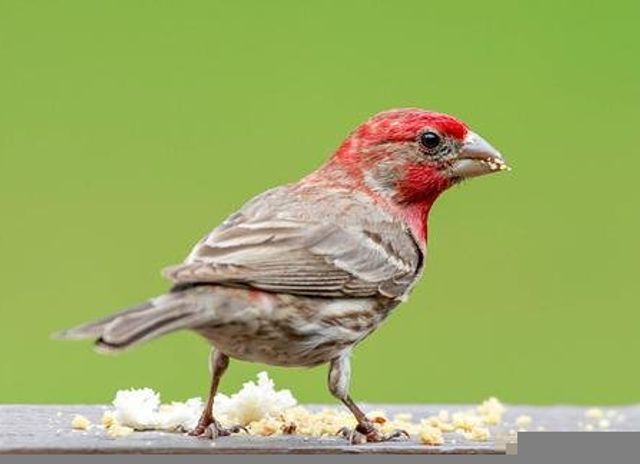
- Length: 5.1-5.5 in (13-14 cm)
- Weight: 0.6-0.9 oz (16-27 g)
- Wingspan: 7.9-9.8 in (20-25 cm)
- Scientific Name: Haemorhous mexicanus
- Frequency of Occurrence: 12.53%
- Where To Find Them: House Finches are found in the following counties in Minnesota: Aitkin, Carlton, Chase, Cook, Faribault, Grant, Hennepin, Isanti, Kittson, Lyon, Martin Luther King Jr. County Park (Dakota), McLeod County Park (Blue Earth), Marshall County Park (Brown), Mower County Park (Red Lake), Pope County Park (Saint Louis).
- How to Attract Them: These birds are attracted to a variety of things in gardens and yards, but one of the best ways to attract them is by providing food and shelter. In winter, House finches will especially appreciate birdhouses with warm materials inside, birdfeeders with seeds and bird baths full of water. Providing these items will help keep these birds happy and healthy all winter long!
General Information: House finches are a common bird found throughout North America. They can be found in all sorts of habitats, but prefer areas with plenty of vegetation. House finches eat a variety of things, but their primary diet consists of plant materials, including seeds, buds and fruits. They are known for their complex vocalizations and are often viewed as pests by homeowners because they eat food from bird feeders.
House finches typically have a distribution range that extends throughout the United States and into parts of Canada. They generally prefer areas with plenty of trees and shrubs, but will also inhabit open areas if they find them suitable. House finches typically nest in cavities in trees, though they will also build nests on ledges if necessary.
Related Posts:
- How to Attract House Finch to your Yard? (Easy & Fast)
- 9 Best Birdhouse for Finches? (Rated & Tested for 2022)
Red-breasted Nuthatch
- Length: 4.3 in (11 cm)
- Weight: 0.3-0.5 oz (8-13 g)
- Wingspan: 7.1-7.9 in (18-20 cm)
- Scientific Name: Sitta canadensis
- Frequency of Occurrence: 12.40%
- Where To Find Them: In Minnesota, they are found in Cass, Crow Wing, Hennepin, and Olmsted counties.
- How to Attract Them: You can plant shrubs and flowers that are known to be favorite foods of this bird, such as sourwood, hawthorn, oaks, and azaleas. In addition, placing a feeder close by will give the nuthatch an easy way to find its food. Another way to attract the Red-breasted Nuthatch is to create interesting nesting sites in your yard. Some examples include creating holes in tall trees or building small nests on high branches.
General Information: The Red-breasted Nuthatch is a common bird in the eastern United States and Canada. It ranges from eastern New England south to Florida and west to Kansas, Nebraska, and Alberta. This nuthatch is usually found in deciduous or mixed forests, but will also nest in coniferous forests.
The diet of this bird consists mainly of insects, but they will also eat fruits, nuts, and seeds. The Red-breasted Nuthatch nests in cavities in trees, most commonly in old woodpecker holes or squirrel nests. They typically have two chicks, but can have up to eight.
Related Post: How to Attract Nuthatches to your Backyard? Expert Tips!
Common Redpoll

- Length: 4.7-5.5 in (12-14 cm)
- Weight: 0.4-0.7 oz (11-20 g)
- Wingspan: 7.5-8.7 in (19-22 cm)
- Scientific Name: Acanthis flammea
- Frequency of Occurrence: 12.25%
- Where To Find Them: They are most commonly found in the eastern half of the state, but they have been seen as far west as Sauk Rapids and as far north as Duluth. These birds are generally common throughout their range, but can be difficult to spot due to their shy behavior.
- How to Attract Them: One way to attract Common Redpolls to your yard is by planting a variety of flowering plants that they enjoy, such as forget-me-nots, goldenrod, and aster. These plants will provide food and shelter for the birds, making them more likely to visit your yard. You can also try setting up a bird feeder filled with thistle, nyjer or black oil sunflower seeds. Make sure the feeder is located in a spot where the redpolls frequent, such as near a tree or shrub.
General Information: The Common Redpoll is a small, red-breasted bird that breeds in North America and Eurasia. It is distributed across most of the northern hemisphere, including Canada and the United States. The Common Redpoll is a common bird in many areas where it occurs.
It inhabits forested habitats, but also frequents open areas with scattered trees. Its diet consists primarily of seeds, although it will also eat berries and some insects. The Common Redpoll nests in colonies on the ground, building a cup-shaped nest of dried leaves and grasses.
European Starling
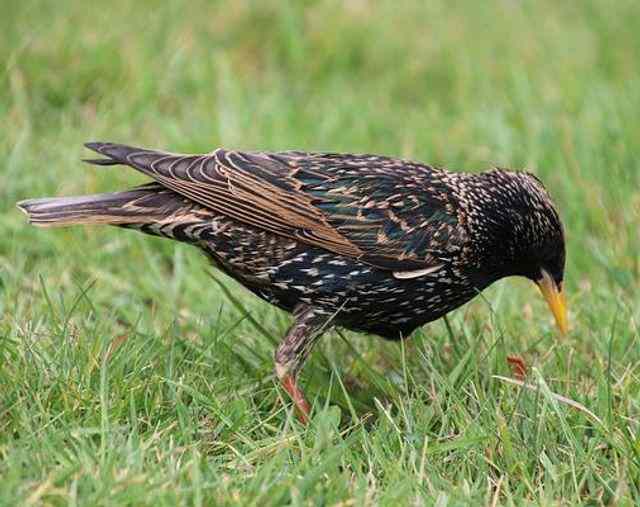
- Length: 7.9-9.1 in (20-23 cm)
- Weight: 2.1-3.4 oz (60-96 g)
- Wingspan: 12.2-15.8 in (31-40 cm)
- Scientific Name: Sturnus vulgaris
- Frequency of Occurrence: 12.06%
- Where To Find Them: The European Starling is a common bird found throughout Minnesota. They are usually seen in open areas such as fields, parks, and meadows. Some counties in Minnesota where the European Starling can be found are Clay, Dakota, Dodge, Hennepin, Ramsey, Rice, Stearns, and Waseca.
- How to Attract Them: Provide a good habitat for the European Starlings. This includes plenty of trees and shrubs, as well as water sources. You can also add nesting boxes or other structures for the birds to use.
General Information: The European Starling is a common bird in North America and parts of Eurasia. It is found in most temperate and subtropical regions. The European Starling’s distribution range extends from the UK, through most of continental Europe, to Russia and Turkey. It ranges eastwards to central Japan, south to Italy and the Balkans, and west to Iberia and northern Africa.
Its habitat includes open country such as fields, gardens, orchards, and rural areas; it also occurs in city parks. The European Starling feeds mainly on insects such as beetles, grasshoppers, crickets, ants, and also berries and fruit sometimes, but will also take smaller prey such as lizards or small animals. It nests in trees or on the ground; the clutch size is four to five eggs.
Related Post: How To Attract European Starlings To Your Yard Fast?
Pileated Woodpecker

- Length: 15.8-19.3 in (40-49 cm)
- Weight: 8.8-12.3 oz (250-350 g)
- Wingspan: 26.0-29.5 in (66-75 cm)
- Scientific Name: Dryocopus pileatus
- Frequency of Occurrence: 10.28%
- Where To Find Them: In Minnesota, they are primarily found in southeast Minnesota (specifically Marshall County) and northwest Minnesota (specifically Clearwater County).
- How to Attract Them: Provide plenty of trees and shrubs for the woodpeckers to hide in. This will create an environment that feels safe and secure for them. Install a bird bath and suet feeders with peanut buttter suet in strategic locations around your yard, especially near areas where the woodpeckers frequent such as tree trunks or branches.
General Information: The pileated woodpecker (Pileatus pileatus) is a large woodpecker that can be found in the eastern United States and southern Canada. The pileated woodpecker is the largest woodpecker in North America and the third largest in the world. The pileated woodpecker ranges from New England to Florida, west to Texas, and north to Alaska.
The pileated woodpecker is found in a variety of habitats, including deciduous and mixed woods, swamps, and even urban areas. The diet of the pileated woodpecker includes insects, spiders, small mammals, and birds. The male and female usually build their nests together, but sometimes one will build alone. Nests are typically excavated, and built in dead, decaying trees 20 to 75 feet above ground.
Related Post: How to Attract Pileated Woodpeckers to your Yard (Fast)
Common Raven
- Length: 22.1-27.2 in (56-69 cm)
- Weight: 24.3-57.3 oz (689-1625 g)
- Wingspan: 45.7-46.5 in (116-118 cm)
- Scientific Name: Corvus corax
- Frequency of Occurrence: 8.62%
- Where To Find Them: In Minnesota, they are primarily found in southeast Minnesota (specifically Marshall County) and northwest Minnesota (specifically Clearwater County).
- How to Attract Them: Provide plenty of food and water – ravens are avid hunters and will search for food often in yards. Make sure there is plenty of fresh fruit, vegetables, and water available for them to find. Create interesting nest sites – if you can provide a safe place for the ravens to lay their eggs, they will likely spend more time around your yard. Look for places with high vantage points or other features that make them hard to reach by predators.
General Information: The Common Raven is a migratory bird that can be found throughout North America. It is the most Common Raven in the United States and Canada. The Common Raven prefers to live in open areas with plenty of trees, such as forests, parks, and fields. The diet of the Common Raven consists mostly of small mammals and birds. However, they will also eat insects, berries, and fruit.
They are considered scavengers and often eat food that has been left behind by other animals. Common Ravens typically nest in large groups near water sources. They build their nests out of sticks, mud, and feathers. Females lay three to seven eggs per clutch, and typically incubate them for about 25 days.
Related Post: 18 Fun Facts About Ravens That Will Amaze You
American Robin
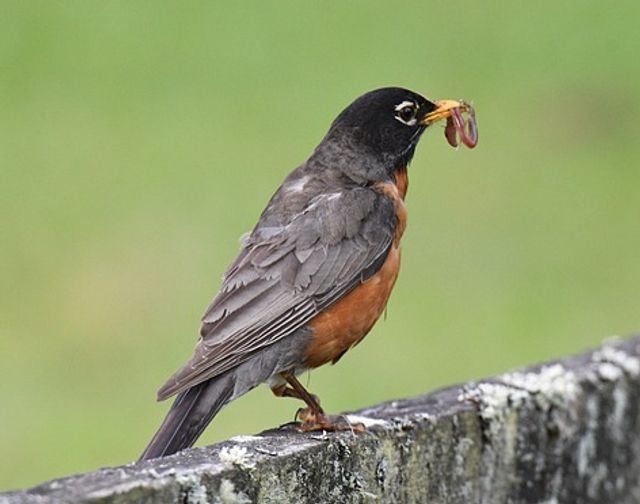
- Length: 7.9-11.0 in (20-28 cm)
- Weight: 2.7-3.0 oz (77-85 g)
- Wingspan: 12.2-15.8 in (31-40 cm)
- Scientific Name: Turdus migratorius
- Frequency of Occurrence: 8.04%
- Where To Find Them: Minnesota has six counties where American Robins are common: Blue Earth, Buffalo, Carver, Clay, Cottonwood and Le Sueur.
- How to Attract Them: To attract American Robins to your yard, you’ll need to provide plenty of food such as, seeds, suet, crushed peanuts, sunflower hearts and shelter. You can also try to create natural bird habitats such as nesting boxes and perches.
General Information: The American Robin is a small to medium-sized bird that ranges throughout much of North America. In the east, it ranges south to central Florida and west to southern California. In the Midwest and Great Plains, it occurs from eastern Nebraska and western Kansas south to central Texas.
The American Robin is common in scattered locations throughout Canada, ranging from the Atlantic provinces eastward to Manitoba and Saskatchewan. The American Robin is mainly a resident breeder in moist woodlands, suburbs, orchards, gardens, and open country but will also nest in dense forests or urban areas. It feeds on insects, earthworms, fruit and other small invertebrates.
Related Posts:
- How To Attract Robins To Your Yard – 7 Best Tips!
- 9 Birds That Look Like Robins But Aren’t (Photos, & Info)
- 5 Best Bird Feeders For Robins (Tested & Rated For 2022)
- Interesting American Robin Fun Facts (Explained)
American Tree Sparrow
- Length: 5.5 in (14 cm)
- Weight: 0.5-1.0 oz (13-28 g)
- Wingspan: 9.4 in (24 cm)
- Scientific Name: Spizelloides arborea
- Frequency of Occurrence: 6.85%
- Where To Find Them: The American Tree Sparrow is a common bird found throughout Minnesota. They are most commonly found in the southern part of the state, and in particular, in counties along the Missouri River.
- How to Attract Them: . Plant plenty of feeders close to where the American Tree Sparrows live. Provide them with suet, nuts, or seed mix in addition to fresh food. This will encourage these birds to stop by your yard more often and make new friends.
General Information: The American Tree Sparrow is a common bird found throughout the United States. The distribution range of this species extends from the southern parts of Canada down to Central America and Mexico. This Sparrow prefers habitats such as open areas with plenty of trees, but will also inhabit urban areas.
The diet of the American Tree Sparrow mostly consists of seeds, but they will also eat grains, fruits, and insects. They are known to nest in holes in trees, but have been known to build nests on bridges and other elevated structures as well.
Related Post: 10 Fascinating American Tree Sparrow Facts
Mourning Dove
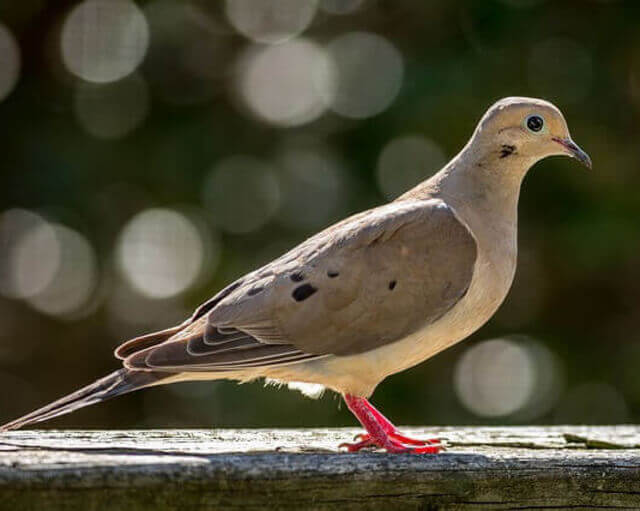
- Length: 9.1-13.4 in (23-34 cm)
- Weight: 3.4-6.0 oz (96-170 g)
- Wingspan: 17.7 in (45 cm)
- Scientific Name: Zenaida macroura
- Frequency of Occurrence: 5.99%
- Where To Find Them: The counties where they are most commonly seen are Benton, Crow Wing, Emmet, Hennepin, Ramsey, and Winona.
- How to Attract Them: Feed the doves regularly. A good bird feeder will keep them happy and fed all winter long! Remember not to overfeed them, as this will make them fat and lazy. Offer fresh fruit, or seed mixes.
General Information: Mourning doves are a widespread and abundant bird species that can be found in a variety of habitats throughout North America. These birds are primarily found in the southeastern United States, but they are also found in parts of Central America and South America.
The mourning dove is an omnivorous bird that feeds on a variety of foods, including insects, seeds, and fruit. They will also scavenge food from carcasses or other sources. Mourning doves commonly nest in large colonies and often reuse nests for successive seasons.
Related Post: Facts About Mourning Doves – 10 Things You Need To Know!
Pine Grosbeak
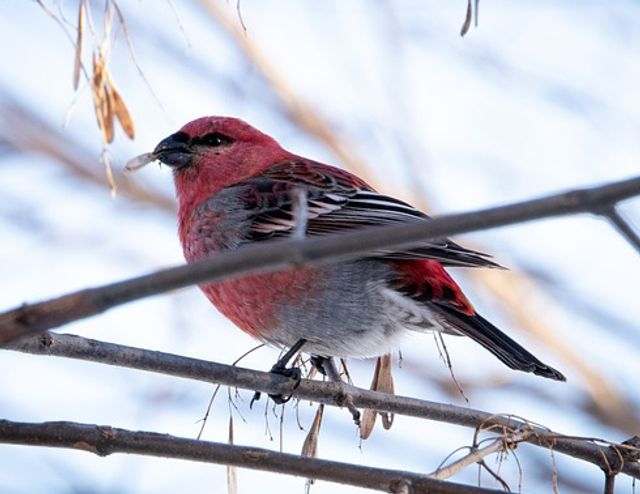
- Length: 7.9-10.0″ in (20.0-25.5 cm)
- Weight: 52-78 g (1.8 to 2.8 oz)
- Wingspan: 12-13″ in (30.5-33.0 cm)
- Scientific Name: Pinicola enucleator
- Frequency of Occurrence: 5.46%
- Where To Find Them: The Pine Grosbeak is a common bird found throughout Minnesota. They can be found in all but two counties in the state. The exceptions are Fillmore and Scott Counties where they are not found.
- How to Attract Them: First, make sure there is plenty of bird feeders and nesting boxes around. These birds are especially fond of suet feeders and will come check them out regularly. Secondly, consider install a special bird bath that features a perch for the birds. Finally, add some pine trees to your yard – they provide natural cover and can be a magnet for other wildlife.
General Information: The Pine Grosbeak is a colorful bird that can be found in most parts of North America. It is the most common songbird in the eastern United States and Canada. The Pine Grosbeak’s distribution range extends from southern Canada to Virginia and west to central Mexico. This bird favors open woodlands with plenty of trees, but it can also be found in mixed forests and suburban areas.
The Pine Grosbeak feeds on insects, seeds, berries, fruit and insects during the summer. It builds a small nest of twigs high up in a tree. The female lays three to four eggs and incubates them for about 13-14 days. When the chicks are ready to fledge, their parents take them down to the ground where they learn to fly and hunt for food.
Pine Siskin
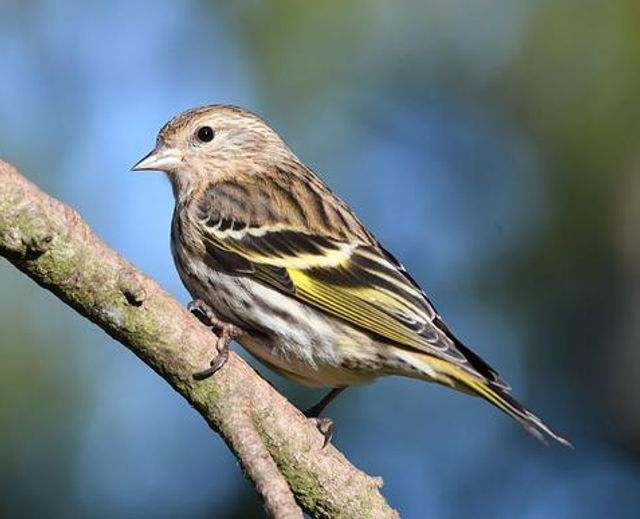
- Length: 4.3-5.5 in (11-14 cm)
- Weight: 0.4-0.6 oz (12-18 g)
- Wingspan: 7.1-8.7 in (18-22 cm)
- Scientific Name: Spinus pinus
- Frequency of Occurrence: 5.22%
- Where To Find Them: The Pine Siskin is a small finch found in the southern part of the state of Minnesota. It can be found in Dodge, Fillmore, Goodhue, Houston, Hubbard, Lyon, Martin and Watonwan counties.
- How to Attract Them: Plant some conifer trees near your feeder. These trees will provide food and shelter for the birds. Provide plenty of fresh water in a bird bath or dish. The Pine Siskin loves water, and will drink often from these sources. Place some suet on the ground near the bird bath or dish. This will help keep the birds fed and healthy.
General Information: The Pine Siskin is a small passerine bird that is found in the eastern and central United States. It ranges from southern New York to northern Louisiana, east of the Mississippi River. The Pine Siskin is found in mixed hardwood and oak-hickory forests, as well as in riparian woodlands.
It also commonly inhabits abandoned buildings and man-made habitats, such as power lines. The Pine Siskin feeds on seeds, plant matter and insects, especially grasshoppers and crickets. The nest is a small platform of sticks built high in a tree. Three to six eggs are incubated by the female for 13 to 16 days.
Related Post: 34 Most Common Backyard Birds In Minnesota (Detailed)

